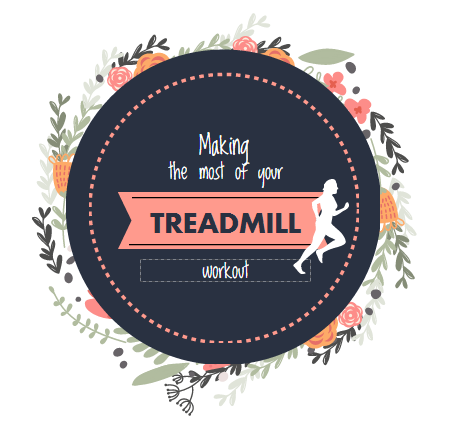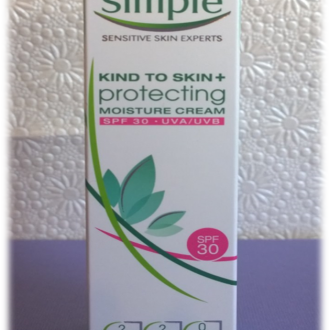We all know by now that I’m running a half marathon soon (aka 9 days, scary) so I’ve been running alot in the past two months. More so than I would have liked to, if I’m honest! The dark, wet, cold and windy weather has meant that I’m more often than not running inside than outside which isn’t ideal but when done properly, can give just as effective a workout as running outdoors. There are some benefits to running indoors, aside from the weather! You have greater control over your pace, and can measure improvements a lot easier without the need for fitness wearables. If you’re like me, aka spend your head in the clouds daydreaming, it’s easy to zone off and dream up your lottery win or alternative world and before you know it, you’re run is over.
The main flaw with running on a treadmill is that it doesn’t emulate the world’s bumps or air resistance that you get when running outdoors, making it less demanding. However, there are some tricks to making a treadmill workout challenging on your body and I’m about to reveal them! Yep, cheesy.

Up the incline
One of the benefits of outdoor running is rough terrain – even when running on a nice flat street, you’ll still be encountering small bumps and hills which challenge your leg muscles and core as you remain balanced. Running on an incline helps to simulate this challenge, and also gives a much more intense workout than when running flat. Running between 1 – 2% incline helps to simulate the outside environment (both the uneven ground and air force), and works your quads, hamstrings, calves and glutes by up to 635% more than flat treadmill running, meaning more calories burnt and more toning. Your core is also worked more as it works to keep your body upright, and your cardiovascular system works harder to keep blood pumping to your muscles at a faster rate.
If you’re going to start incorporating incline running, it’s best to build it up slowly as you can strain the front of your shins and tops of your feet if you go from never running on an incline to running long distances, so try running on incline for five minutes out of ten in intervals and slowly build it up. If you do find the tops of your ankles and feet being sore after an incline run, keep ice on them and avoid the incline for a week to allow the muscles to repair themselves.
HIIT
HIIT, High Intensity Interval Training, is where you alternate high intensity runs with less intense ‘recovery’ runs or walks – basically, you run on max speed for a short period of time, followed by jogging or walking for a slightly longer period of time. Calories wise, HIIT boosts your metabolism for about 12 – 24 hours after exercising as HIIT classes as anaerobic exercise, meaning you can’t get enough oxygen to replenish what is lost during exercise so your body uses energy stored in the muscle. This produces lactic acid, which your body converts back glucose once there is enough oxygen. This happens after exercising, hence the higher metabolism for a few hours. Lactic acid is responsible for the cramps you get during intense exercising.
In terms of running, HIIT is a great way of increasing your body’s endurance to lactic acid, meaning that in longer runs which aren’t HIIT based, you won’t tire as easily, improving your performance. Woo! It’s also a great way of increasing your overall speed, as you force your body to run faster than normal. Those minute bursts add up – I do HIIT for 40 minutes alternative 8.5km with 11.5km, meaning I run for 20 minutes at 11.5km, something I couldn’t keep up in one go.
Interval running
Similar to HIIT, but on a more moderate basis, interval running is done on long runs (30 minutes or more) by alternating your normal pace with a slightly higher pace (I go from 8.5 - 9.5k) for five minute periods. On an easy run, I’ll run at 9km usually, so even though my average speed through an interval run is the same, it gets me practise at running faster or a longer period of time than HIIT.
Tempo running
Tempo running is basically just running at a slightly faster speed than normal, at a ‘comfortably hard’ pace. It’s something you can keep up, but will need to consciously push yourself through, and may think on more than once occasion’ no I need to stop now’. Doing tempo running increases your lactate threshold (the stuff that tires your muscles, and also gives you cramps) by delivering more lactate and hydrogen ions into the muscles, leading your body to become more efficient at delivering oxygen to the muscles in order to use up the lactate. This basically means more tempo running = better oxygen efficiency = higher fatigue point = better runner.
Barefoot running
I spoke a while back about pronation and supination and how taking steps to correct the arch muscles in your feet is super important for healthy joints and muscles in your legs. Well, walking and running barefoot is a great way to build up these arch muscles as it forces your body to use the right muscles to balance your gait, rather than relying on support to do the work. Interestingly, it’s actually using shoes from an early age (rather than soft moccasin style shoes or barefoot) which can contribute to poorly formed arches, so it’s no surprise that barefoot running can help fix the problem. Don’t go throwing your shoes away just yet, as poorly formed arches need to be corrected slowly. I wear support shoes for my run, then on the cool down walk I go barefoot (with socks obviously). I also fully stretch my feet out afterwards. I recently tried to do a run barefoot and found it pulling on my achilles heel so stopped, but hopefully with time I’ll be able to incorporate barefoot running to strengthen my feet, meaning I can step away from the support shoes!
Hopefully now the weather is picking up (apart from the freak March snow!?) running outdoors will be really enjoyable, but if you do prefer running at the gym or if it;s just easier to fit in a treadmill workout, try incorporating these methods – you’ll definitely notice a faster improvement in your fitness!
What exercises have you been up to lately?





